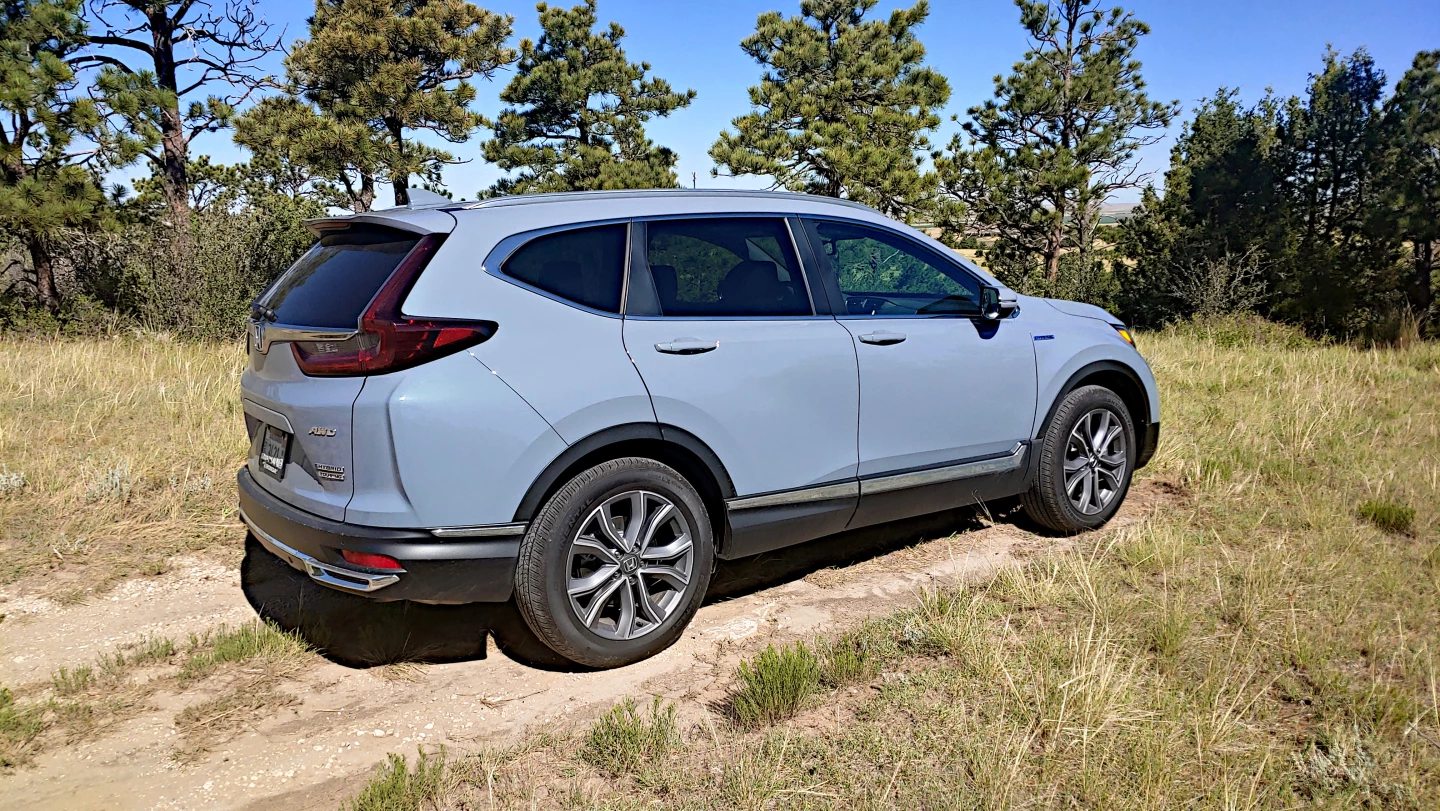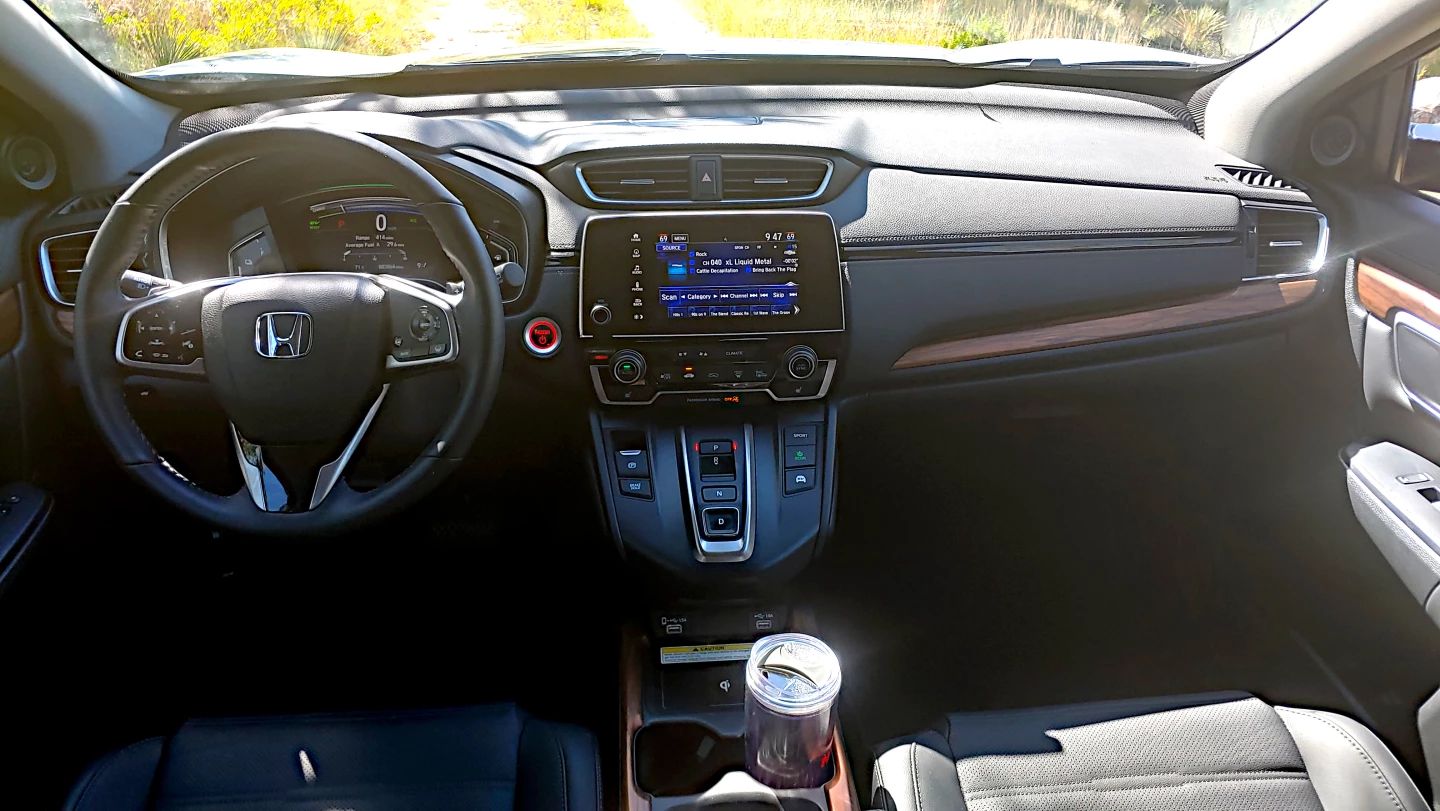The CR-V was introduced in its fifth-generation in 2017 without a hybrid model on offer. It’s not clear whether Honda held that hybrid until now in order to build suspense or if the hold-back was in order to get the hybrid just right. We aren’t sure how successful it was on those counts, but can tell you whether we think this hybrid was worth the wait.
At a Glance
- Roomy and versatile just like the standard gasoline model
- Because of the hybrid drivetrain’s design, all-wheel drive is standard
- Real-world fuel economy returns aren’t as good as one might hope
- Acceleration is sluggish, especially by today’s hybrid tech standards
The Honda CR-V is a top-seller in the small sport utility crossover segment but it faces some strong competition, so Honda needed to ensure a shot at the top spot by being in the most competitive fields for this class. That now includes electrification, especially hybrid options, with the Toyota RAV4, the CR-V’s chief rival, having a hybrid version that has won acclaim and set a high bar.
The CR-V Hybrid raises fuel economy compared to its gasoline counterpart without compromising the things that have made the Honda CR-V a top seller. Interior roominess, a large cargo space, and good all-around usefulness have been the CR-V’s best attributes from the beginning, and those remain with this new CR-V Hybrid model. Everything remains the same, in fact, in terms of headroom, legroom, etc. The exception is cargo space, which gets 6 cubic feet (170 L) smaller, a mostly imperceptible loss for most people.

What changes is fuel economy thanks to the hybrid-electric powertrain. The 2020 Honda CR-V Hybrid has a 2.0-liter four-cylinder engine and an electric motor that combine to output 212 horsepower (158 kW) in all-wheel drive. AWD is standard in the hybrid model thanks to the electric motor powering the rear axle. That power output compares to the 190 hp of the standard gasoline version and sounds impressive, but the added weight of around 300 lb (136 kg) for the CR-V Hybrid, as well as its more fuel-conscious acceleration-averse nature actually make it feel less powerful. Like most Hondas, from standstill to the first eight or ten miles per hour, the CR-V Hybrid feels pretty peppy, but after that, it loses all oomph and becomes disinterested.
That lack of panache in the powertrain translates to better fuel economy, though. The EPA says that the 2020 CR-V Hybrid is capable of 38 mpg (6.2 L/100km) combined. In our week of driving, which admittedly always results in lower than EPA combined results, our mixed driving totaled only 29 mpg (8.1 L/100km) overall. That’s far below expectations, even for our usual misses here. Highway MPG totals are far easier to test reliably and we usually get close to or above EPA numbers when testing with most vehicles. With the CR-V Hybrid, which the EPA rates at 35 mpg (6.7 L/100km) on the highway, we did get better results, but still fell under par. Our highway test netted only 31.5 mpg (7.46 L/100km) in all. For comparison, the RAV4 Hybrid we tested in 2016 achieved about the same return.
Fuel economy is a big part of the reason to buy a hybrid, of course, and the returns for this Honda are pretty good when compared to its gasoline option, but probably not good enough that most people will see a significant savings at the pump. The gasoline model is EPA rated at 34 mpg (6.9 L/100km) on the highway and we saw that without trouble in this generation when equipped with the turbocharged engine. The difference in fuel economy, at least on the highway, is negligible and won’t justify the higher price tag of the hybrid model upgrade. Around town, however, the hybrid will inherently be more fuel efficient and will without question likely save fuel. How much fuel? Not easy to say, but probably not enough to easily justify the US$1,200 price premium it carries, That’s an apples-to-apples upgrade (CR-V AWD to CR-V Hybrid AWD) price jump. Going front-wheel drive gasoline CR-V would save more than double that.

Where the CR-V in any format shines is in its daily usability. It’s roomy, it’s easy to understand, it’s got competent controls, and it has easy-to-use technology. It doesn’t shine in any one area particularly brightly, but it isn’t dull in any either. It’s good, basic, and all-around well done.
So the difficult point here is justifying the hybrid powertrain over and above its gasoline counterpart. We are otherwise very impressed with the CR-V on the whole. It’s a best-seller for a reason, having an excellent mix of what clearly appeals to consumers and the hybrid model doesn't change that.
Product Page: 2020 Honda CR-V Hybrid

















